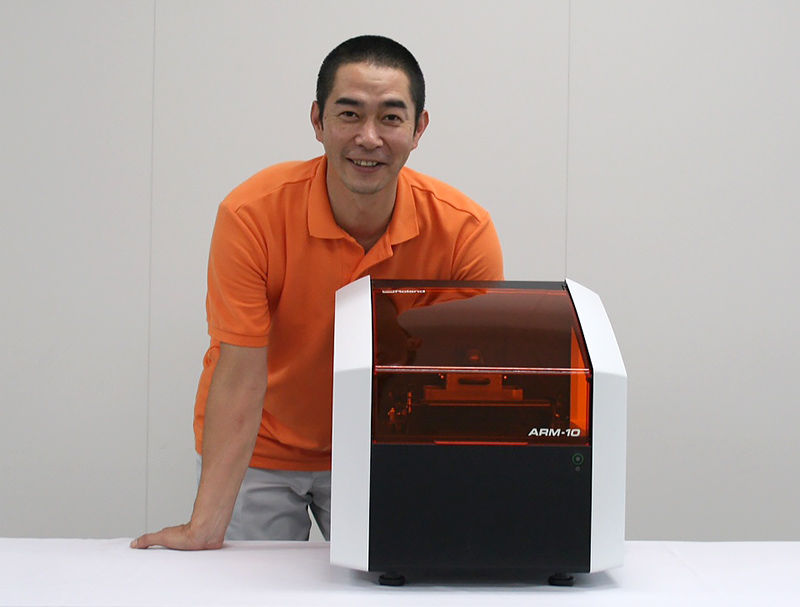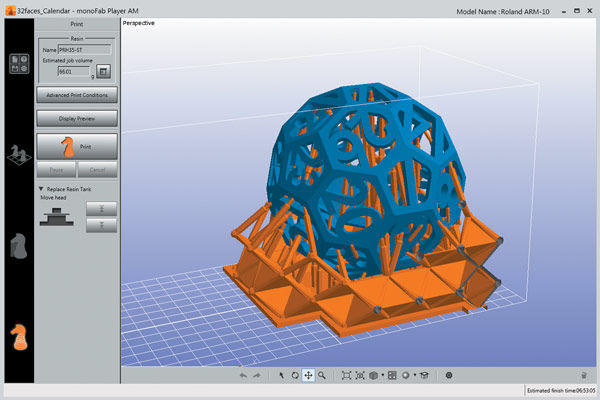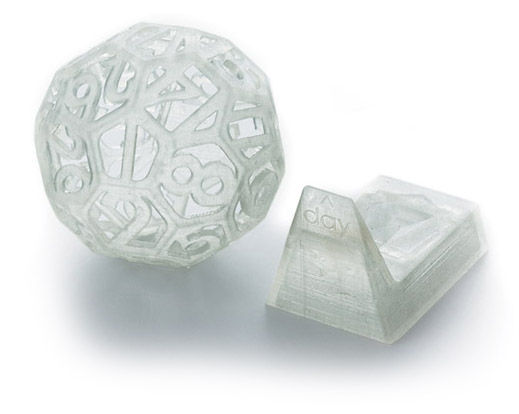Interview with Keigo Okusa, Roland DG manager of 3D product development

Of the many additive methods available, why did you choose to produce a stereo-lithography 3D printer with a layered projection system for the ARM-10?
The concept behind our desktop applications emphasizes three important values: desktop size, ease of use, and affordable pricing. We also wanted to develop a rapid prototyping 3D printer capable of modeling complex shapes with the high precision required by product prototypes. During our extensive research and development process, we determined that a stereo-lithography 3D printer with a layered projection system using a compact projector was the most suitable solution.
Were there any issues you had to overcome when developing a stereo-lithography printer?
There were two key problems we faced. A small projector is used as the light source engine for our 3D printer. With ordinary projectors, rays of light are converged using plastic lenses. However, deterioration resulting in cloudiness can occur due to continuous exposure by UV light. Initially, we were unable to cure the resin satisfactorily due to this issue. We pushed ahead with development by reviewing lens material properties and repeatedly modifying the lens shape until we were satisfied. Thus, we were able to install a lens that could realize adequate curing even after a prolonged period of use.
Second, we researched no less than 82 different combinations in order to find the most suitable resin material for our layered projection system. In this method, the composition of the resin, the light wavelength, and the compatibility of exposure strength are all very important factors. We worked diligently to ensure the optimum balance, including users’ running costs, as we overcame these problems.
What inspired the design and orange color of the ARM-10 Rapid Prototyping 3D Printer?
The orange color on the front cover has the effect of blocking UV rays. We wanted to ensure that the effects of UV rays from outside the unit did not cure the materials. In order to improve light shielding efficiency, we also increased the tightness of the cover’s seal by giving both ends a bent shape. Because orange is also the color of the monoFab brand, we used the same color for our new SRM-20 desktop mill.

How easy is it to operate the printer?
The ARM-10 unit can be controlled with a single button. By using the included monoFab Player AM output software, even beginners will find it easy to start modeling. monoFab Player AM automatically repairs defects in 3D data and creates the removable supports required for 3D printing an object.

Compared with competitors’ products, what ARM-10 features are unique?
In the rapid prototyping 3D printer market, there are currently several competitive products in the same price range as the ARM-10. However, there is no other product within the category of Desktop Fabrication that uses a stereo-lithography 3D printer with a layered projection system. The 3D printers available that do incorporate this methodology are good at modeling complex shapes with high precision, but are usually very expensive. We wanted to offer a compact 3D printer that could be used for creating prototypes at an affordable price. I believe that this is one major advantage. Another advantage is that our resin becomes semi-transparent when cured, so that the models produced by ARM-10 can be easily colored to check the finished image.

